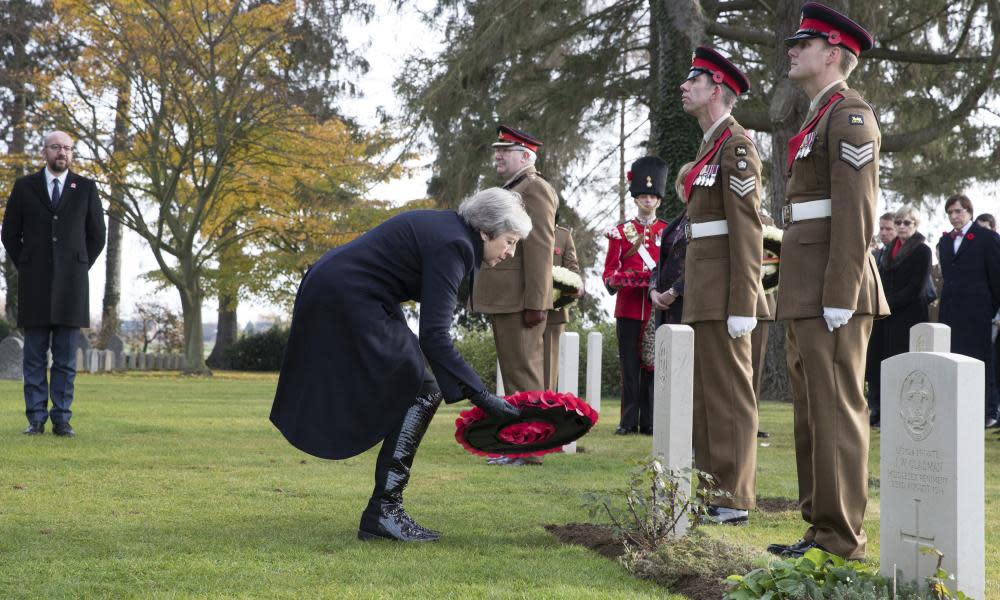Theresa May pays armistice tribute to killed British soldiers

Theresa May and the Belgian prime minister, Charles Michel, have laid wreaths at the graves of the first and last British soldiers to be killed during the first world war, at the start of a weekend of commemorations of the 100th anniversary of the armistice.
Between the firing of the bullet that killed 16-year-old John Parr from Finchley, north London, in August 1914, and the ringing out of the shot that struck down 40-year-old George Edwin Ellison, from Leeds, on 11 November 1918, about 750,000 British soldiers were killed.
Coincidentally, a few yards of lawn stand between the two men’s graves at St Symphorien military cemetery on the outskirts of Mons in western Belgium.
At the cemetery, established by Germany in 1917 as a tribute to the dead on both sides, the British prime minister issued a statement.
“A century ago British forces fought side by side with our allies in Europe on the western front. Today in France and Belgium we reflect on our shared history, but also look ahead to our shared future, built on peace, prosperity and friendship,” she said.
After attending a reception with Michel, and British and Belgian serving armed forces in Mons, May was due to travel to France to meet the French president, Emmanuel Macron, in Albert, a town in the heart of the Somme region that was heavily bombarded during the first world war, before visiting the Thiepval memorial.
Parr, who lied about his age in order to enlist in the army, was killed by rifle fire on 21 August as he scouted ahead on his bicycle in the first tentative British advance on Mons. The Germans buried him in the cemetery.
The remains of Ellison, who was killed 90 minutes before the armistice in a final, pointless advance, when it was clear to all that they were on the cusp of peace, were brought to the cemetery from a field grave by the British in the 1920s. There was no knowledge at the time of the significance of the plot opposite.

 Yahoo News
Yahoo News 
